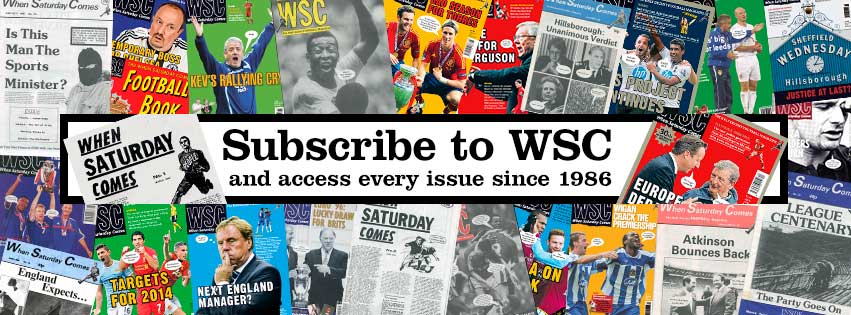From Newcastle wearing light blue at Old Trafford to Chelsea in “teal” at Southampton, clubs are ever more desperate to promote their short-lived products
29 November ~ Traditional styles are being lost.” This is a line taken from a letter to Charles Buchan’s Football Monthly in the mid-1960s, lamenting how Liverpool, Stockport County and other clubs had ditched their white shorts in a switch to all-red or all-blue home kits. If the letter writer, one T Jackson from Stockport, is still with us today, he or she will have been forgiven for firing an angry slipper at the TV on the weekend of October 6-7.
Never mind a change of shorts, this was a weekend when Newcastle United, Arsenal, Chelsea and Manchester City ditched their home colours altogether and wore away kits in fixtures where no switch was required. “Must be crap away kit weekend,” tweeted ESPN writer Mark Ogden, and certainly for traditionalists the sight of Newcastle in light blue at Manchester United, Arsenal in dark blue and dark red at Fulham, Manchester City in dark blue at Liverpool, and Chelsea in something called teal-blue at Southampton, was enough to draw a weary sigh. (Punctuated perhaps with a snort of derision prompted by the Chelsea website blurb explaining that their shirts’ “dynamic print” includes “an aerial depiction of Stamford Bridge and its surrounding area, ensuring a link to home even when the team is playing away”.)
In truth, “crap away kit weekend” merely underlined the direction of travel as clubs seek ever more visibility for second and third strips with a single-season shelf life. Of the 48 matches featuring an away kit among the first nine rounds of Premier League games, a non-scientific survey would suggest 16 changes were unnecessary, such as Everton at Arsenal and Bournemouth (prompting more than one query to the club’s fan engagement team), and Wolverhampton Wanderers at Leicester City and Manchester United.
As for Manchester City, they have worn light blue in only one of five away fixtures in domestic competition – curiously, on the solitary occasion they faced a side in blue, Cardiff City. The champions, it is believed, do not have an official policy that away kits must always be worn but evidently commercial pressures dictate. The view of one experienced sports lawyer is that: “Theoretically the likes of Nike and Adidas could try and oblige clubs to wear the second or third kit on a minimum number of occasions, but this is unlikely. Instead, as clubs are usually incentivised on the basis of kit sales, it’ll be the club itself that elects to push the different kits.”
Premier League rules permit clubs to wear three kits per season – a habit West Bromwich Albion have taken with them into the Championship: their wonderful yellow-and-green striped jersey (a revival of the 1970s classic) is somehow their second away kit, behind a forgettable black-and-cyan offering. In the case of League One Luton Town, their three shirts each carry a different sponsor’s name. As for Fulham, they have worn four kits already this term: when neither their navy or black away kit was considered suitable for the August trip to Tottenham Hotspur, they received permission to revert to an old red jersey.
According to ex-Premier League referee Howard Webb, some of the seemingly less necessary changes – such as Brighton swapping their blue-and-white stripes for green at Southampton and Newcastle – do help match officials. “I didn’t like refereeing stripes v stripes of any colour,” he said. “It’s even harder for the assistant referees, who see the side view of lots of stripes moving back and forth when trying to make offside judgements.” He added that a clash of shorts was never a problem “but socks are pretty important for obvious reasons – namely when identifying which foot touched the ball.”
Today clubs must submit their planned colours ten days in advance and Premier League officials use a piece of software to confirm whether these will clash or not. (Colour blindness is another factor, meaning particular care must be taken with certain combinations such as red and green – a point raised with the clubs before the season began.)
It is all a far cry from the days when the referee would turn up two hours before kick-off, check the kits – and occasionally panic. In November 1991, in the final season of the old First Division, Everton arrived at Kenilworth Road to discover Luton’s home shirts featured royal blue across the sleeves and sides. Everton duly borrowed Luton’s orange away tops which they wore with their own white shorts and blue socks. Luton, winless on the road that season, did not prevail once in that away shirt but that afternoon, Everton did – and the Hatters ended the campaign relegated by two points. Simon Hart
This article first appeared in WSC 381, December 2018. Subscribers get free access to the complete WSC digital archive – you can find out more here
